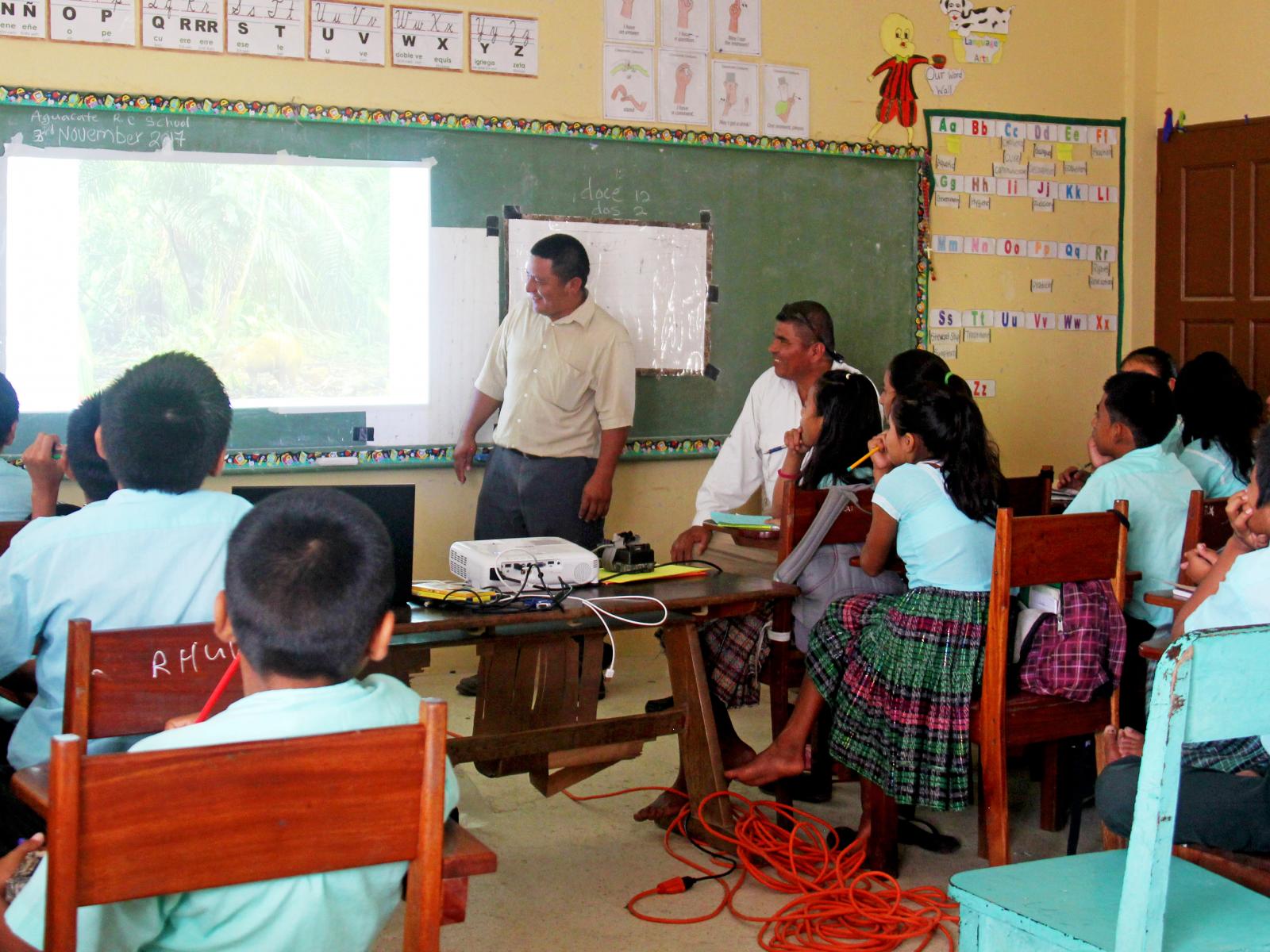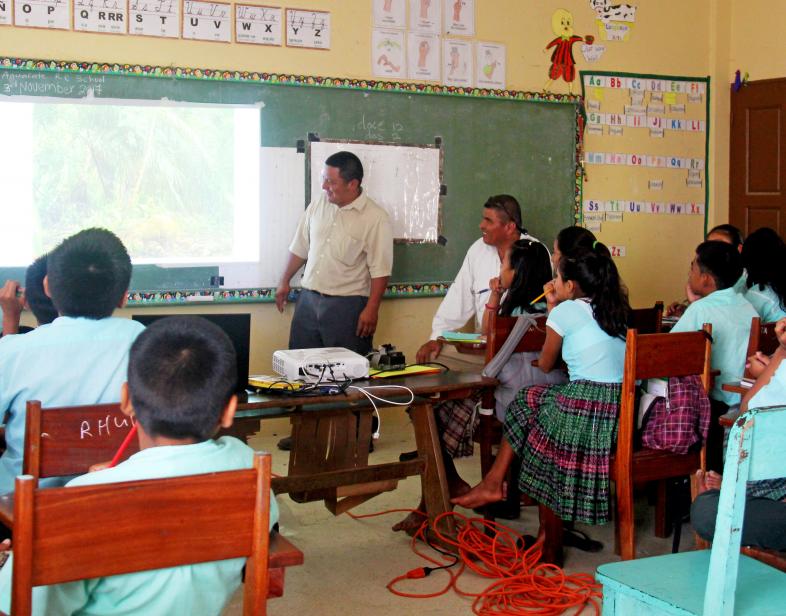An Overview Of Our Solution
The jaguar (Panthera onca) is one of the most iconic forest mammals in the Americas. They can no longer be legally hunted following a ban by the Convention on International Trade in Endangered Species (CITES), but still face a variety of pressures in Belize, such as illegal poaching and habitat reduction due to land development for agriculture. Investigations into recent jaguar deaths have revealed a possible new market for jaguar teeth and continual conflicts with farmers. This project reduced the instances of conflict between humans and jaguars through educational awareness and species monitoring.
- Population Impacted:
- Continent:
Last name
Organization type
Context Analysis
Jaguars in the MesoAmerican region have been eradicated from 40 percent of their historic range due to illegal poaching and land development for agriculture and growing human populations. Last year alone in Belize there were a spiral of 3 cases jaguars found without their heads. A recent GIS based study undertaken by Ya’axché reveals the severity of habitat degradation and forest loss and highlighted the importance in maintaining the connection between the Maya Mountains and the coastal forests. This loss of connectivity, which would fragment the Belizean jaguar metapopulations, could reduce jaguar subpopulations in Toledo to below the estimated minimal viable population size of 500 individuals. The genetic bottleneck generated by this division could have significant long-term implications on species fitness. As the agricultural frontier pushes further into traditional jaguar habitat, contact between humans and jaguars becomes more frequent.
Describe the technical solution you wanted the target audience to adopt
To reduce the instances of human and jaguar interaction which typically results in the loss of livestock and/or the jaguar population reduction, the project developed the following solutions:
- Created demonstration farms to show the capability of infrastructure changes on livestock farms to help reduce human-jaguar conflict. Mitigation strategies included, solar powered alarm systems, solar night predator deterrent lights, solar sound systems, donkeys and corral fencing.
- Developed monitoring through camera traps deployed around affected farms for jaguar identification, livestock demographic data, signs/sightings of jaguars and information on the effectiveness of mitigation measures. The cameras are a part of the confidence building measures to encourage the farmers to be open to changes in their animal husbandry.
- Increased understanding of Jaguar ecology including jaguar migration patterns, home ranges, hunting habits and preferred prey.
Type of intervention
Describe your behavioral intervention
Below is the list of measures to encourage the behavioral intervention:
Donkeys: they are very aggressive and protective animals, when raised together with cattle they act as a natural alarm system by braying when they perceive a threat; they are also not afraid of jaguars so if the jaguar attacks they will be very protective.
Corral: fencing is a useful preventative measure but not many corrals are up-to-date and require understanding of the types of material use and dimensions of structures to keep out Jaguars.
Solar Sound Alarm System: Jaguars are very clever animals and they get used easily to any mitigation measures that remain static (like the bright lights) and eventually they will return knowing that the light is not threatening.
Solar Night Predator Lights: The combined system functions as an environmental friendly system which basically consists of a speaker that emits 3 different ultrasonic frequencies and has LED flashlights to scare predators.
Camera Trapping: The use of cameras allowed the team to integrate the research of Jaguars into the project. It has also allowed farmers to learn more about Jaguar activity and gain an appreciation for Jaguars.
As needed, please explain the type of intervention in more detail
Traditionally livestock farmers are in direct conflict with Jaguars and a first response would be to kill the Jaguar. The reduce the number of conflicts and losses to the Jaguar population the project was developed to provide innovative ways for farmers to interact with the Jaguars therefore applying to choice architecture. An important part of the project was the educational sessions on Jaguars and ways to deter Jaguars from their livestock farms through innovative measures. The measures installed were then specifically tailored to minimize conflict. The measures were intentionally easy to install to dependency on technical assistance and outside funding
Describe your implementation
EDUCATION/OUTREACH:
- A total of 2 forums/workshops were conducted with the participation of 40 farmers and 300 students where participants received information and training around technology and techniques that can help to reduce the human-jaguar conflict.
- A total of nine farmers (8 males and 1 female) from six different communities were recruited to enter into agreements that outlined their commitment to help reduce the human-jaguar conflict and to participate in a long term study of the effectiveness of different mitigation measures
- A national awareness campaign was launched under the slogan: “Keep cows and Save jaguars”
- A total of 11 attack reports on jaguar attacks were made to the Jaguar Conflict Resolution Officer and visits to farmers from 5 different communities were conducted to respond to reports of problem jaguars. A total of 23 reports from farmers were recorded for the duration of the project.
- Ya’axche partner with PANTHERA and Forest Department to conduct joint awareness nationally; but most importantly was the formation of the first ever national jaguar working group consisting of NGOs and government partners
IMPLEMENTATION AND MONITORING OF MEASURES:
- A total of 7 of the most effective mitigations measures were implemented in 9 farms from 6 different communities
- A total of 30 farm profiles were created in farms from 13 communities buffering the Southern Biological Corridor
- A total of 20 camera traps were deployed in 9 farms to monitor the presence of jaguars in the area.
External connections
The project was funded by the Number of Organizations engaged with our project: A total of 7 organizations participated in activities related to the project: Belize Forest Department, Toledo Livestock Association, University of Belize, Wildlife Conservation Society (Belize), Panthera (Belize), Ministry of Agriculture and the National Jaguar Working Group. One major success for Ya’axche, as a result of this project, was the special designation that it received from the National Jaguar Working Group (NJWG) to act as advisor within the National Technical Advisory Commitee at the NJWG to review the National Response Protocol.
Who adopted the desired behaviors and to what degree?
Nine farms of different scales implemented mitigation measures:
Farm 1- small scale: implemented the use of donkeys, corralling and solar sound system
Farm 2 - medium scale: implemented the use of donkeys, secure fencing, solar night predator deterrents (360 Degrees Solar lights or 360DSL)
Farm 3- large scale: implemented corralling, solar non-motion lights and solar sound system
Farm 4- small scale: implemented solar sound system, corralling, solar night predator deterrents (360DSL)
Farm 5- large scale: implemented an electric fence, solar sound system and wireless motion-sensor lighting system
Farm 6- small scale: implemented corralling, solar sound system and solar non-motion lights
Farm 7-small scale: implemented secure fencing and solar sound system
Farm 8- small scale: implemented corralling and solar night predator deterrents (360DSL)
Farm 9- small scale: implemented secure fencing and solar night predator deterrents (360DSL)
How did you impact natural resource use and greenhouse gas emissions?
The use of solar powered equipment allowed this project to utilize green technologies and not contribute additional energy use to the livestock farms. As a follow-up project Ya’axche is exploring the implementation of an Silvopastoral ago-forestry system which allows for the growth of trees throughout a pasture to further reduce greenhouse gas emissions to on these farms. The planting of trees would increase carbon sequestration and also serve to offset methane emissions from livestock. Silvopastoral ago-forestry systems serve to improve soil micro-climate and in turn increase overall biodiversity.
What were some of the resulting co-benefits?
Co-existence between jaguars and people play an important role in the protection of jaguars. This project has helped to build a strong partnership with livestock farmers who are the main group affected by the human jaguar conflict and, most of the time, are one of the hardest groups to keep engaged. It is important that a long-term relationship is established so that we can make sure both livelihoods and jaguars are protected and that eventually this project is switched into a more permanent initiative. In order to achieve this, it is crucial that joint collaboration between stakeholders is developed so that the efforts are replicated and we could see a bigger impact across the country. This project helped to build strong relationships with partners that play an important role in the jaguar conservation but also helped collect data that can be useful for others. This information will contribute to building and sustaining the long-term study initiated through past projects and will set a baseline for learning more specific details about, not only the strategies that can contribute to reduce the human jaguar conflict, but how to adapt to different challenges that are encountered. The project successfully helped to develop and analyze new alternatives, methodologies and approaches to face uncertainties resulting from this conflict. These will continue to be monitored beyond this project period to ensure that we have solid data that can be used in the protection of jaguar and their habitat, and that can also help people and their livelihoods find a positive way of co-existing with this species.
Sustainability
The project relies on grant funding for the initial implementation and requires continual donations for the monitoring and research of the Jaguar activity. Partners will continue to assist Ya'axche, providing support in technical guidance and providing leaflets on topics related to the human jaguar conflict to distribute among the communities in the Toledo District. Finally, the National Jaguar Working Group has expressed their interest in working closely with Ya’axche to provide guidance and support to other organizations working in the country to help address the human jaguar conflict and replicate this model.
Return on investment
$59, 947.80 USD
This funding was sufficient to implement the project at this scale namely the purchasing of equipment to monitor jaguar activity and implement the mitigation measures.
How could we successfully replicate this solution elsewhere?
To effectively replicate this solution elsewhere the inclusion of international partners like Panthera is required as it is a global organization dedicated to the conservation of 40 wild cat species and their ecosystems. On this project Panthera partnered to provided technical assistance in Jaguar ecology training and the provided advice on the best practices to implement to reduce human/jaguar conflict. All project costs should account for the following:
- The funding required would be for the purchasing of materials and equipment for each farms; it is suggested at least two measures to be installed on each farm along with a camera trap to allow for continual research on the Jaguars/ wild cats.
- The educational component of the project is required with multiple workshops
- Monitoring and the hiring of a conflict resolution officer will ensure the measures installed are successful and assist with technical support



